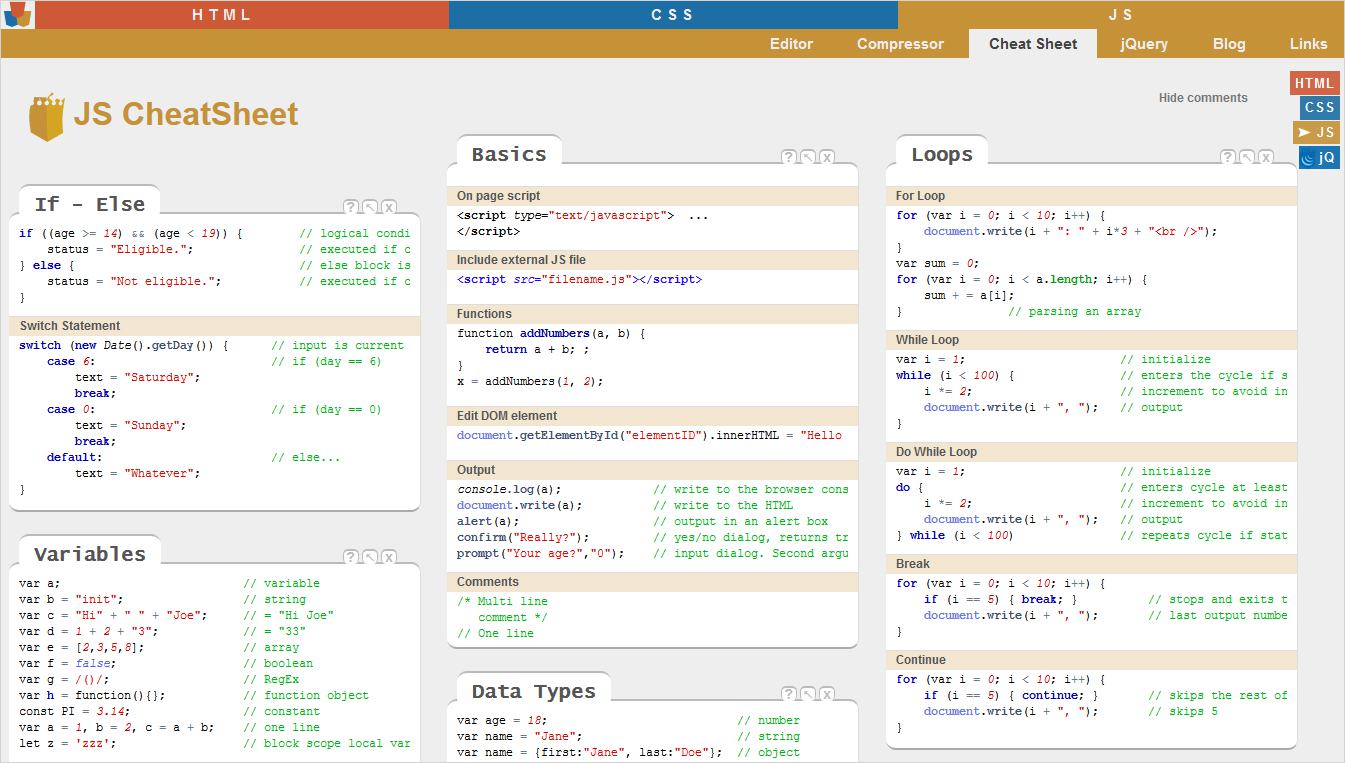The Ultimate Javascript Cheatsheet
By Gyanendra Kumar Knojiya
Sep 1, 2021 6:30 PM

What is JavaScript?
JavaScript, often abbreviated as JS, is a programming language that conforms to the ECMAScript specification. JavaScript is high-level, often just-in-time compiled, and multi-paradigm. It has curly-bracket syntax, dynamic typing, prototype-based object orientation, and first-class functions.
- First appeared: December 4, 1995; 25 years ago
- Paradigm: event-driven, functional, imperative
- Stable release: ECMAScript 2021 (12th edition) / June 2021; 2 months ago
- Typing discipline: Dynamic, weak, duck
- Designed by: Netscape, Brendan Eich
JavaScript Basics
Set of JavaScript basic syntax to add, execute and write basic programming paradigms in Javascript
On-Page Script
Adding internal JavaScript to HTML
<script type="text/javascript"> //JS code goes here </script>External JS File
Adding external JavaScript to HTML
<script src="filename.js"></script>
Functions
JavaScript Function syntax
function nameOfFunction ()
{
// function body
}
DOM Element
Changing content of a DOM Element
document.getElementById("elementID").innerHTML = "Hello World!";Output
This will print the value of an in JavaScript console
console.log(a);
Conditional Statements
Conditional statements are used to perform operations based on some conditions.
If Statement
The block of code is to be executed, when the condition specified is true.
if (condition) {
// block of code to be executed if the condition is true
}If-else Statement
If the condition for the if block is false, then the else block will be executed.
if (condition) {
// block of code to be executed if the condition is true
} else {
// block of code to be executed if the condition is false
}Else-if Statement
A basic if-else ladder
if (condition1) {
// block of code to be executed if condition1 is true
} else if (condition2) {
// block of code to be executed if the condition1 is false and condition2 is true
} else {
// block of code to be executed if the condition1 is false and condition2 is false
}Switch Statement:
Switch case statement in JavaScript
switch(expression) {
case x:
// code block
break;
case y:
// code block
break;
default:
// code block
}